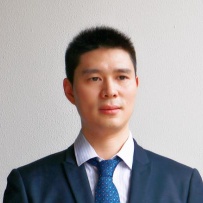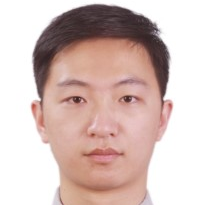Quantum and Classical Physical Cryptography
A special issue of Entropy (ISSN 1099-4300). This special issue belongs to the section "Information Theory, Probability and Statistics".
Deadline for manuscript submissions: 30 April 2024 | Viewed by 12269
Special Issue Editors
Interests: quantum communication and information security; quantum blockchain and privacy protection; quantum algorithm and artificial intelligence; basic problems of quantum mechanics and quantum gravity
Special Issues, Collections and Topics in MDPI journals
Interests: wireless network security; signal processing; smart and reconfigurable environment; reconfigurable intelligent surfaces and smart antenna
Special Issue Information
Dear Colleagues,
With the rapid development of quantum computing, the deployment of cryptographic algorithms based on mathematical complexity assumptions, such as RSA algorithms, has been severely threatened. Cryptography, a practice based on quantum physical principles and classical physical principles, can maintain high levels of security. In particular, quantum cryptography can theoretically demonstrate its information-theoretic security. After years of efforts by numerous researchers, both quantum and classical physical cryptography have transitioned from the laboratory to practical applications.
The objective of this Special Issue is to compile a selection of articles that showcase the most recent advancements in theories and experiments related to quantum cryptography and classical physical cryptography. We invite submissions related to theoretical and experimental progress in areas such as, but not restricted to, quantum cryptography, quantum communication, quantum networks, physical cryptography, chaotic cryptography, wireless physical layer cryptography and post-quantum cryptography.
Dr. Hua-Lei Yin
Dr. Kaizhi Huang
Dr. Guan-Jie Fan-Yuan
Guest Editors
Manuscript Submission Information
Manuscripts should be submitted online at www.mdpi.com by registering and logging in to this website. Once you are registered, click here to go to the submission form. Manuscripts can be submitted until the deadline. All submissions that pass pre-check are peer-reviewed. Accepted papers will be published continuously in the journal (as soon as accepted) and will be listed together on the special issue website. Research articles, review articles as well as short communications are invited. For planned papers, a title and short abstract (about 100 words) can be sent to the Editorial Office for announcement on this website.
Submitted manuscripts should not have been published previously, nor be under consideration for publication elsewhere (except conference proceedings papers). All manuscripts are thoroughly refereed through a single-blind peer-review process. A guide for authors and other relevant information for submission of manuscripts is available on the Instructions for Authors page. Entropy is an international peer-reviewed open access monthly journal published by MDPI.
Please visit the Instructions for Authors page before submitting a manuscript. The Article Processing Charge (APC) for publication in this open access journal is 2600 CHF (Swiss Francs). Submitted papers should be well formatted and use good English. Authors may use MDPI's English editing service prior to publication or during author revisions.
Keywords
- quantum key distribution
- quantum random number generation
- chaotic key distribution
- wireless physical layer key distribution
- chaotic private communication
- post-quantum cryptography
- quantum conference key agreement
- quantum noise stream cipher
- quantum-enhanced cryptography
- quantum secret sharing
- quantum digital signatures
- semi-quantum key distribution
- quantum secure direct communication
- quantum fingerprinting
- quantum consensus
- quantum bit commitment








